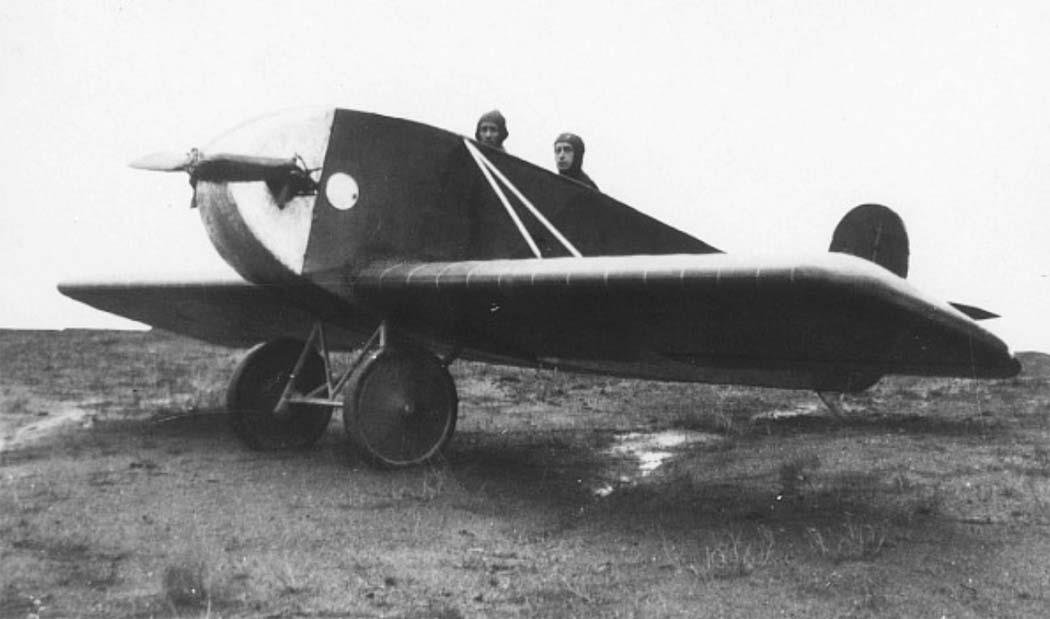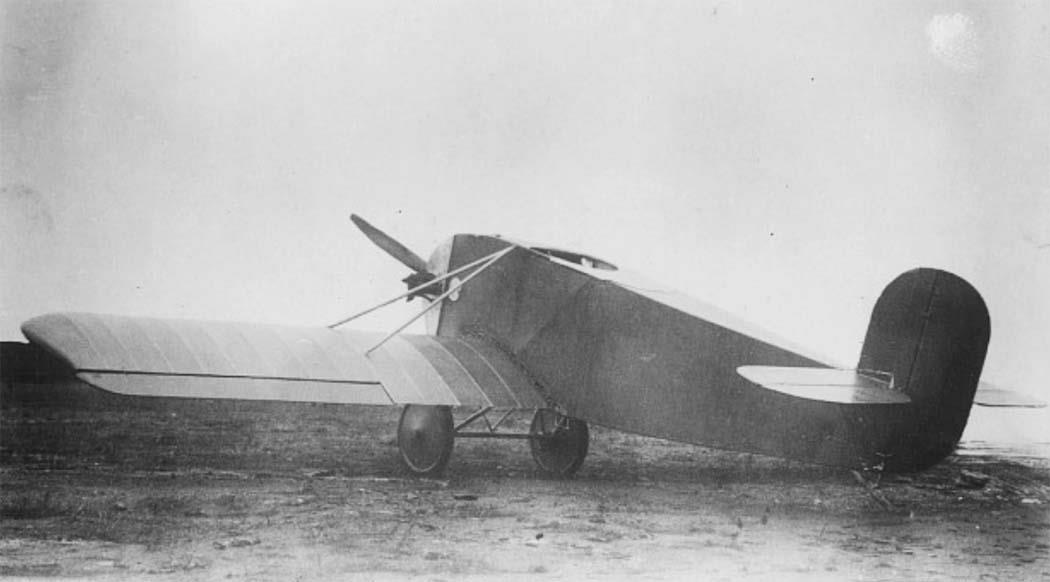| Type |
Two seat trainer |
| Engine |
1 Haacke - Fuel capacity for 3 hours. consumption for 100 km 8 kg. oil consumption in 3 hours 2,5 kg |
| Dimensions |
Length 5.40 m, height 1.95 m, span 8.00 m, wing area 10.60 m2, aspect ratio 6.0 |
| Weights |
Empty 180 kg, fuel 22 kg, oil 2 kg, load 160 kg, flying weight 340 kg, wing loading 32 kg/m2 |
| Performance |
Max. speed 115 km/h, cruising speed 100 km/h, service ceiling 2400 m, range 350 km, landing speed 55 km/h |
| Type |
Werk.Nr |
Registration |
History |
|
|
|
Only one built |

The low-powered DP.VII was a simple, easily transportable, low-wing monoplane intended to make sports aviation more widely accessible. It had a simple, thick section wing, essentially rectangular in plan apart from blunted, angled tips. This had two main wooden box spars and was braced to the upper fuselage on each side with an inverted V-form pair of struts from the upper fuselage longerons to the spars at about one-third span. Unusually, the one-piece wing structure passed through the deep fuselage above the lower longerons and could be extracted in a few minutes then transported away on a pair of trestles normally stowed inside the DP.VII. The aircraft had long-span ailerons filling about two-thirds of the wing.
The simple, flat-sided fuselage was a steel-tube structure with four longerons, linked by welded struts, defining the shape. Internal piano wire bracing stiffened the fuselage, which was fabric-covered. The open cockpit was over the rear wing and was large enough for a passenger to sit behind the pilot, straddling a box seat. Though the power was low, the structure was light and the load/empty weight ratio (0.89) was noted as high. At the time, the installation of the 22 kW (30 hp) air-cooled Haacke HFM-2 engine was seen as particularly clean, with only the upper cylinders projecting out of the cowling.
The DP.VII's mainwheels were mounted on a single axle, conventionally rubber sprung to a cross member attached to the lower fuselage longerons by a V-form pair of struts on each side. Less conventionally, the undercarriage structure was braced by another, transverse, V-strut from the cross piece centre to the longerons. There was a sprung tail skid at the rear.
The exact date of the DP.VII's first flight is not certain, but the prototype had been well tested by late May 1924 and there were plans to put it into quantity production. At almost the same time, Dietrich-Gobiet were developing the DP.VIIA which, despite the similar designation, was a larger-span, parasol-wing monoplane. It had a similar fuselage and empennage to the DP.VII but a much more powerful engine, a Siemens-Halske Sh 4 five-cylinder radial producing about 41 kW (55 hp). This aircraft was on display at the Third International Aero Show at Prague in early June 1924. Few of either type seem to have been produced.




